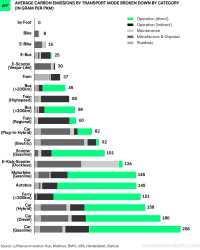>>1790188Specific power is power divided by weight. When you are talking about transporting a number of people or goods, you are effectively talking about transporting a certain weight, since the other variable you could use (volume) is rarely the limiting factor.
Power x time=energy
speed = distance/time
Power/speed=energy/distance
Specific power=power/weight
Specific power/speed=energy/(distance x weight)=energy/(distance x number of people)
So the graph tells you EXACTLY what you are asking for. For max efficiency you look at the bottom of the graph, like it's explained in the post itself. The graph also acknowledges that usually the faster you go, the more energy you expend, and so uses the diagonal lines to compare the means of transportation that offers the best compromises between efficiency and speed. (unsurprisingly, they are the very big ship, the train and the jet airliner)
Honestly some figures on the graph are iffy, like the horse that was probably assumed to produce 1hp when at top speed they actually produce 15 to 25 hp, the fact it uses gross weight rather than useful load, being made from the combination of the performance specifications of several different designs rather than a signle representative of each and jets ending up looking slightly better than they should because propulsive losses were ignored (as acknowledged by the pa it's from), but it's a useful comparison.
>>1790102>he doesn't travel by personal submarine to workngmi

